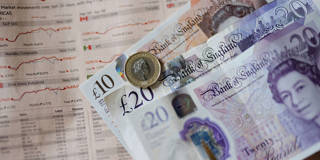
Boris Johnson Leaves Behind a Sterling Mess
Investors appear to view the British pound more like the currency of a troubled emerging market than of a stable advanced economy. And now, with Prime Minister Boris Johnson’s resignation and the attendant political uncertainty, sterling is poised to sink further.
BERKELEY – British Prime Minister Boris Johnson’s chaotic government, and its equally chaotic collapse, are not the only source of panic in the United Kingdom nowadays. There is growing anxiety about the exchange rate of the British pound as well.